The temperature at what seems like the top of the world is brutal, cold enough to steal your breath away—but so is the view spread before me in the full moon glow. I’m standing on the edge of a cliff in Jasper National Park, high in the Canadian Rockies in Alberta. It is the dead of night, and I am here for one of the main attractions in Alberta’s largest national park: stargazing.
I have ventured out with a group into the bone-breaking cold to stargaze in one of the darkest places in the park, after a show at the Fairmont Jasper Park Lodge Planetarium. Inside the planetarium, which hosts a celestial educational program, the universe swirled around and above us in the new 50-seat dome, as a “star guide” led us on a journey through our galaxy. We then continued outside to peer at nebulas and dying stars through the largest telescope in the Rockies.
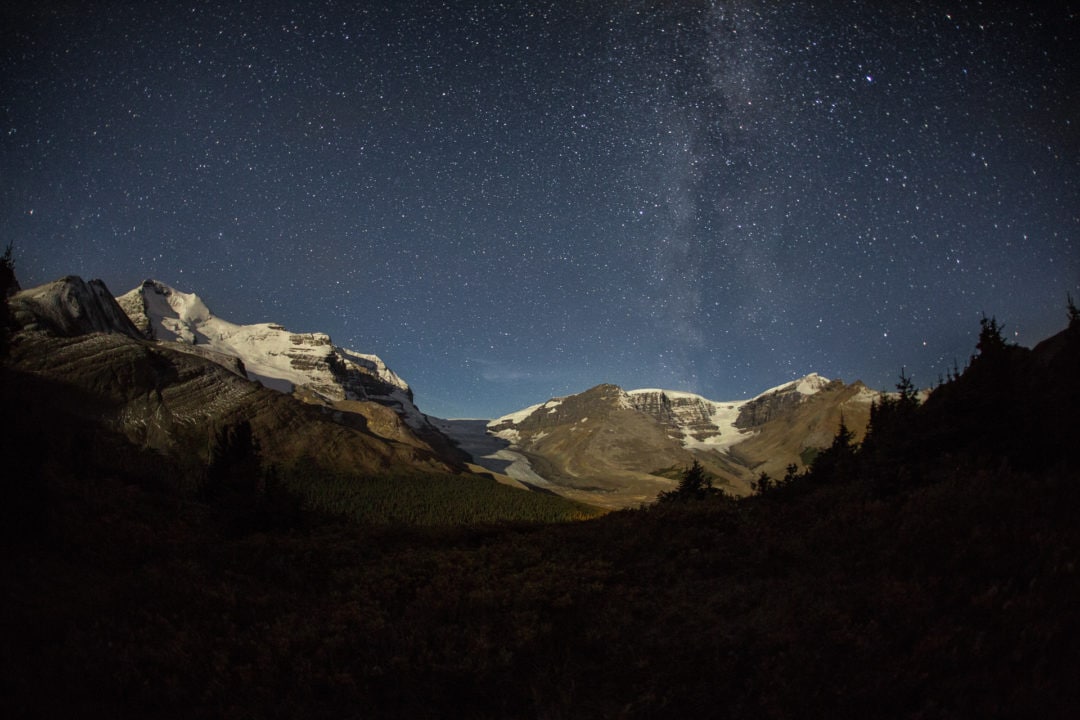
Jasper is the second largest Dark Sky Preserve in the world, and on moonless nights, that black expanse of space looks dusted in the powdered sugar of millions of stars.
Beauty in Jasper is just as present at night as it is during the day, but creating an environment where the night can shine takes more than just dimming the lights. As information emerges about the health and ecological damage that light pollution creates, more communities and parks are taking steps to achieve Dark Sky Preserve status. But these preserves don’t happen on their own: Cities, park services, residents, and tourism boards all come together to make the skies go dark in unique partnerships.
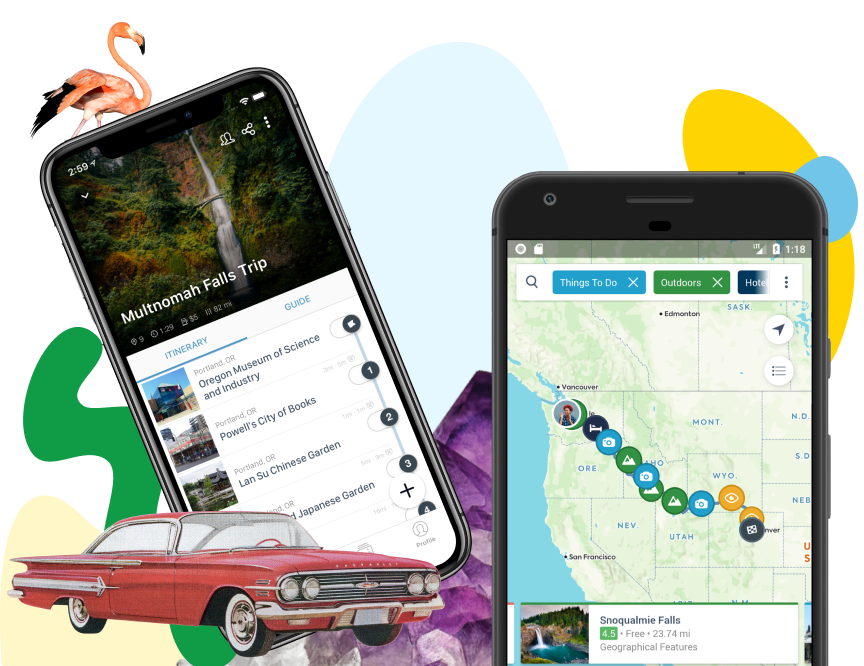
Download the mobile app to plan on the go.

Share and plan trips with friends while discovering millions of places along your route.
Get the AppCreating a Dark Sky Preserve
In 2011, Jasper was designated a Dark Sky Preserve by the Royal Astronomical Society in Canada, after it limited light pollution and created ideal conditions for dark sky viewing. In order to become a Dark Sky Preserve, the area had to have no artificial lighting visible, and measures were put in place to educate the public and nearby towns about light pollution. The sky glow from outside the border of the preserve had to match that of a natural sky glow.
Jasper National Park is one of the wildest of the mountain parks in Canada. Established in 1907, it is also home to the world-famous Columbia Icefields, one of the only ice fields in the world accessible by road.
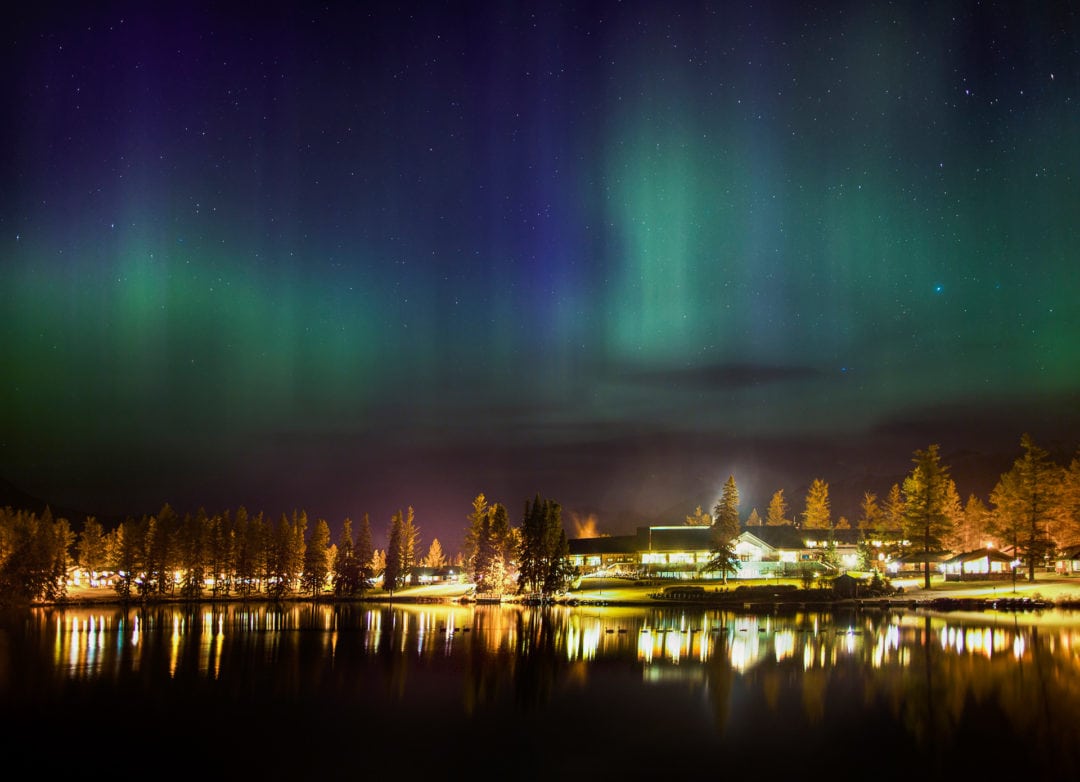
The proposal to make the park into a Dark Sky Preserve was prepared by Parks Canada in collaboration with the Royal Astronomical Society of Canada and the Municipality of Jasper, along with partners Tourism Jasper and the Jasper Chamber of Commerce.
Today, 97 percent of the park is a designated wilderness area, free of light pollution, with roads and trails providing easy access to year-round stargazing sites.
“Jasper National Park is one of 17 designated Dark Sky Preserves in Canada,” says Myriam Bolduc, marketing manager for Tourism Jasper. “At 11,000 square kilometres, we are the second largest Dark Sky Preserve in the world, and we are the largest accessible Dark Sky Preserve—meaning there’s a town within the limits of the preserve.”
The negative effects of light pollution
According to a 2016 study, 80 percent of the world’s population lives under artificial skyglow. In Europe and the United States, 99 percent of the public can’t see what a non-polluted night sky looks like.
“As cities grew, so did the amount of outdoor lighting,” says Bolduc. “The resulting light pollution has masked most stars, forcing people to venture far beyond their home metropolis to witness the Milky Way. A growing body of evidence suggests light pollution can negatively affect human health, along with insect and animal populations.”
Humans, like most living things, work on a circadian rhythm, which sets our biological clocks. Those clocks can be thrown off by exposure to artificial light at night, especially blue-rich light that comes from LEDs used in most outdoor lighting.
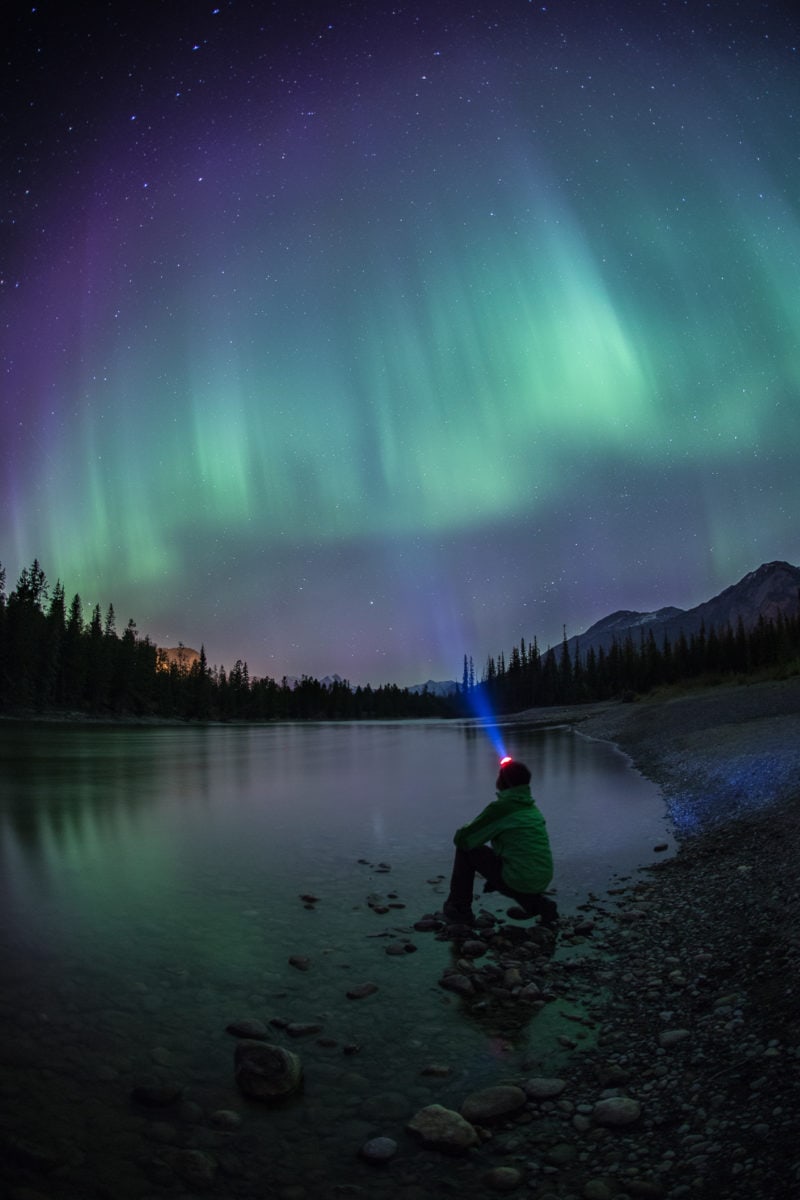
“Around the property, we’ve invested several thousands of dollars to install these specialty dark skylights that only project light to the ground and minimize the amount of light that spread into the sky,” says Taylor Lancee, public relations manager at Fairmont Jasper Park Lodge. “Another super interesting thing is that all the city lights were shifting the migratory patterns of birds in the area. So by minimizing the light pollution, we’re actually enhancing the bird populations coming into Jasper during the right times of year.”
Local residents making changes
The national park wasn’t the only place to make major changes, like replacing outdoor lighting with dark sky lighting. The Jasper Community Sustainability Plan, developed in 2011, was the town of Jasper’s attempt to protect its skies. The town developed the “Efficient Outdoor Lighting” community handbook to help Jasper residents choose outdoor lighting. Because Jasper lies within the boundaries of the preserve, it had to comply with the Dark Sky Preserve lighting protocols, and all lighting in the town must eventually be dark-sky friendly.
“The global citizens of the world who live in major cities overrun with light pollution have lost the simple and joyous ability to look up and view the beautiful night sky above us all.”
Residents who light their property at night had to change to downward-facing, shielded lighting on timers or motion sensors and switch blue light LED lights to amber, which minimizes the effect on wildlife behavior and reproduction.
“The global citizens of the world who live in major cities overrun with light pollution have lost the simple and joyous ability to look up and view the beautiful night sky above us all,” says Lancee. “A Dark Sky Preserve allows the locals and visitors of Jasper to enjoy uninterrupted views of 500,000 stars in Jasper’s 11,000 square kilometers. To look up and see the Northern Lights, the Milky Way, and the tens of thousands of shining shimmering stars, galaxies, and nebulas on any given night of the year is an experience one will cherish for the rest of their life.”
Dark Sky Festival
Thanks to these efforts, Jasper National Park boasts of one of the best stargazing destinations in North America, and it’s easy to see why.
When Jasper National Park earned its preserve certification, it created the Dark Sky Festival, held annually in October by Tourism Jasper. Since 2011, the two-week-long festival brings thousands of people into the park to explore starry mysteries, dance under the aurora borealis, and take part in stargazing adventures below the peaks of the Canadian Rockies.
Aside from the nightly light show put on by the universe, the festival includes events throughout the month, both in Jasper National Park and in the town of Jasper. Activities include V.I.P. stargazing receptions, talks with NASA astronauts and scientists, and a view of the swirling blue and green Northern Lights.
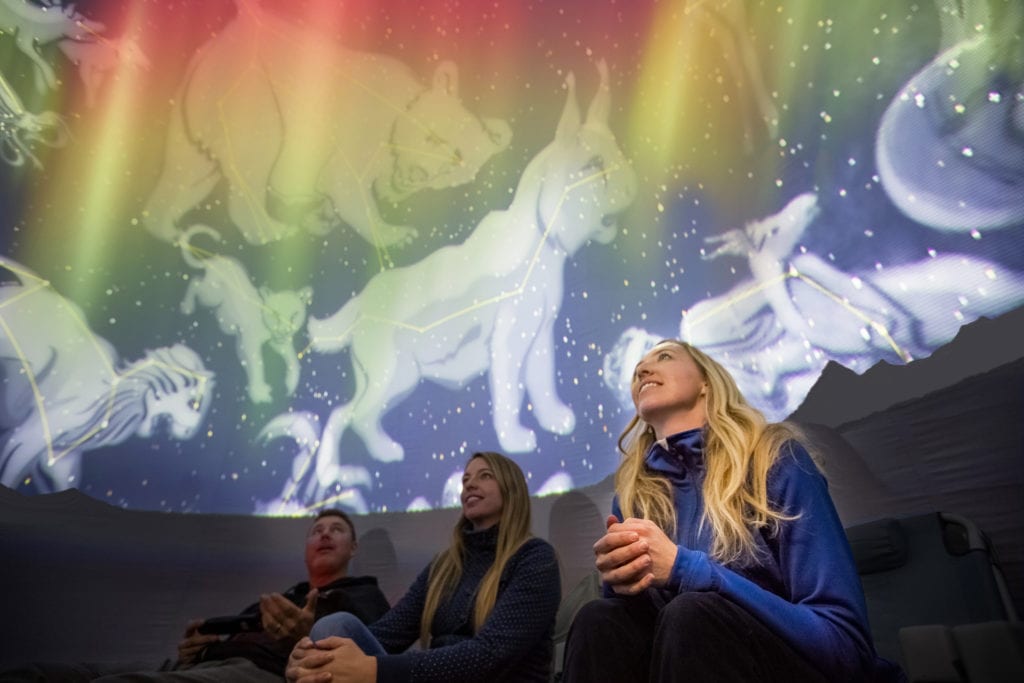
The festival is so popular that on May 1, Fairmont Jasper Park Lodge announced a new partnership with the Jasper Planetarium, which extends the Jasper Planetarium and Telescope Experience to a year-round event for the next three years.
The Planetarium will now remain open May 1 through October 31 and offer nightly virtual tours of Jasper’s dark sky through local Aboriginal constellations, Northern Lights, and an orbit through space.
Where to see the stars
Jasper National Park is a favorite destination for roadtrippers, Lancee says, thanks to its location four hours from Edmonton, five hours from Calgary, and three hours from Lake Louise.
Any time of year is ideal for getting starstruck at Jasper. The year-round camping destination can accommodate all size campers and tents. Campsites with RV hookups are in fairly high demand and somewhat short supply, so making reservations early is always a good idea.
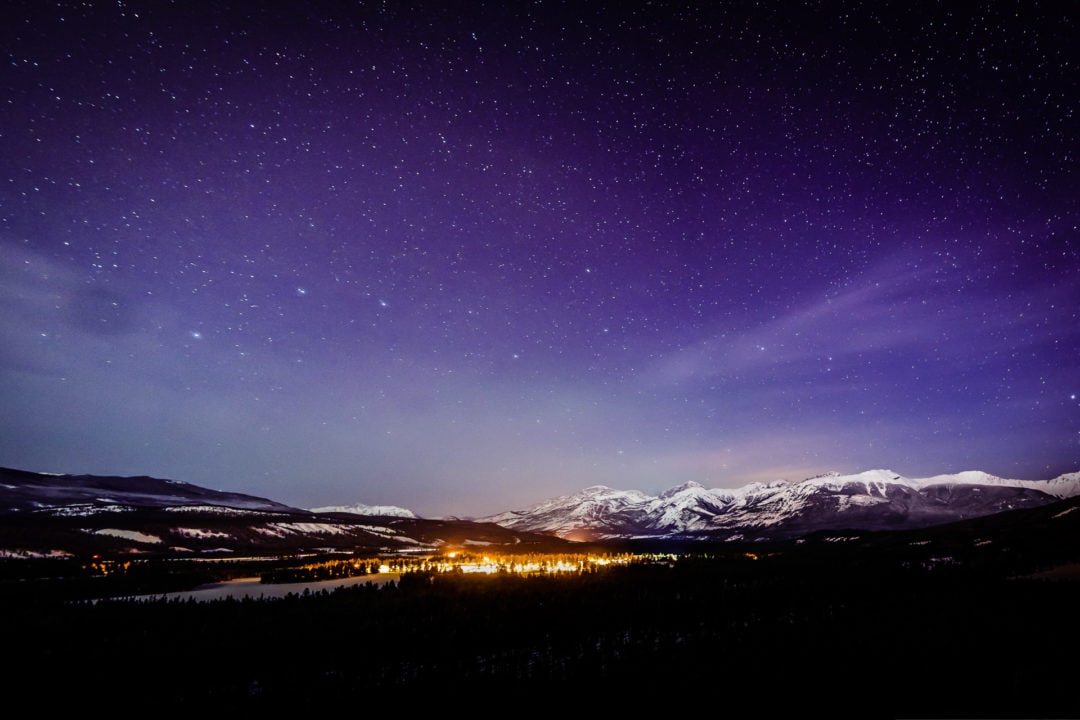
Throughout the massive national park, the night sky is waiting to show off its bright mysteries. According to Jasper Tourism, some of the best places to witness its celestial masterpieces include Medicine Lake, located 25 kilometers outside the town of Jasper. This blue glacier-fed lake disappears with the arrival of autumn, but the stars remain all year long.
Maligne Canyon is the deepest canyon in the park filled with roaring waterfalls, but is also located in one of the darkest areas of the park. The wooden boardwalk leading into the canyon is ideal for witnessing the beauty of the bright stars.
Athabasca Falls may not be the largest waterfall in Jasper National Park, but the roar of the falls coupled with the mountains looming in the distance makes it a powerful site for stargazing. Of course, the Columbia Icefields is an otherworldly destination to begin with, but truly becomes a celestial and ghostly landscape at night.
Fans of the Northern Lights have a better-than-good chance of witnessing the event within the park’s borders as well. “The aurora borealis is definitely hot, hot, hot. We’re able to compete as a destination with the Northwest Territories, Iceland, and the Yukon,” Lancee says. “Some places are such touristy locations that it’s very difficult for them to limit the light pollution that they’re spreading to the sky. It’s not like that here. It’s pure here.”
If you go
For more information on visiting Jasper National Park’s Dark Sky Festival, visit jasperdarksky.travel. For camping and visitors’ information, visit jaspernationalpark.com. For more information about Dark Skies and how you can make a difference in light pollution, visit the International Dark-Sky Association at darksky.org.



